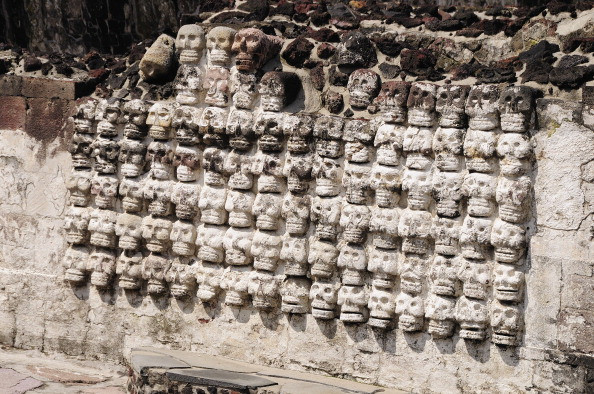Mexico: Archaeologists close to discovering hidden tomb of Aztec kings at Great Pyramid

Mexican archaeologists have discovered a passageway that may lead to a secret chamber hiding tombs of Aztec rulers in the ruins of Templo Mayor. Also known as Great Temple, or Great Pyramid, Templo Mayor was one of the main temples of the Aztec Empire (15th century) located in its capital city of Tenochtitlan, which is now Mexico City.
The passageway is continuation of a tunnel discovered in 2013 that leads to Cuauhxicalco, a circular structure where the bodies of Aztec rulers were cremated, according to historical records.
In excavations that year, archaeologists found a large container at the mouth of the tunnel containing gold objects, knives, the skulls of two children aged five and seven and the bones of eagle among other materials. The artefacts and human remains clearly hinted at the ritual practice of human sacrifice by Aztec people.

The newly found passageway behind the south wall of Cuauhxicalco is 27.5ft long, 45cm wide and 1.6ft high. It may lead to two sealed doors. These doors may possibly be the entry to two burial chambers, archaeologists have announced.
"By releasing of earth and stone, we learned that led directly to the heart of Cuauhxicalco. In the background there were two masonry walls that seem to seal two old hits," Lopez Lujan, director of Temple Project Mayor, announced during a meeting with the National Institute of Anthropology and History (INAH).
"From what sources say regarding the Cuauhxicalco [is that it] was a funerary building," he added. "We speculate that behind these walls may be two small rooms which contain the cremated remains of some Tenochca [Tenochtitlan] rulers, perhaps Moctezuma I and his successors, Axayacatl and Tizoc, considering the construction phases reflected in this building."
Archaeologists said the announcement was only a hypothesis and that excavation will resume in 2016 for further confirmation. The ruins of Templo Mayor have so far revealed as many as 30 religious buildings, small shrines, paintings, murals, sculptures, offering objects and more artefacts that have enriched the patrimonial heritage of the Mexican people, the researchers said.
© Copyright IBTimes 2024. All rights reserved.







